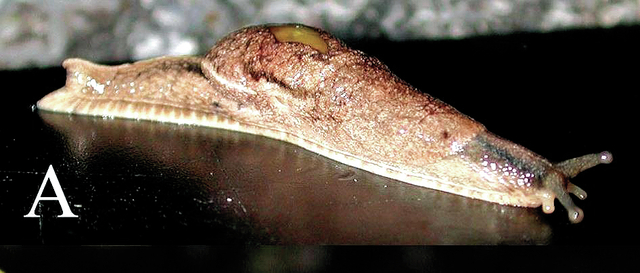When it comes to rat lungworm disease, there’s always another question to answer.
In the United States, the potentially life-threatening tropical disease is most prevalent in East Hawaii, particularly Puna. People typically become infected by eating food or drinking water that contains the parasitic nematode angiostrongylus cantonensis. The parasite attacks the brain and nervous system; in some cases, rat lungworm disease can lead to a coma and even death.
Angiostrongylus cantonensis has a complex life cycle. The nematodes live in rats, and are passed on to slugs and snails that feed on rat feces. If people eat produce with slime trails on it, or accidentally eat the snails themselves, they can ingest the parasite.
In 2004, research entomologist Robert Hollingsworth, who had been working with slugs and snails in the context of agriculture, was asked to investigate an outbreak of a new species of slug just north of Kapoho.
“I understood it to be a new one that no one else had seen,” Hollingsworth, who works at the U.S. Department of Agriculture Pacific Basin Agricultural Research Center, said. “Sure enough, it was a new pest.”
That new pest was the semi-slug, so named because it has a small shell on its back. Fully grown, it is about two inches long.
Hollingsworth talked to families in the area and found that three people in one family had come down with rat lungworm disease. He collected samples of the semi-slug to send to the federal Centers for Disease Control.
“The numbers of these parasitic nematodes in the bodies of those slugs was pretty much off the charts,” Hollingsworth said. “They had never seen anything quite so high.”
The discovery prompted a collaborative study between the CDC and PBARC.
More than a decade later, Hollingsworth is planning a follow-up study to see what the current distribution of the semi-slug is.
“The numbers are shifting around,” he said. “There are some places where that semi-slug used to be high in numbers, and it’s gone down in those original areas.”
“It was introduced to the Puna area; that’s pretty well-documented,” said Susan Jarvi, a professor at the University of Hawaii at Hilo College of Pharmacy. The slug is now found on the Hamakua Coast and as far away as Kona.
Although many slugs and snails can transmit rat lungworm disease, the semi-slug is regarded as a much more notorious carrier.
Based on the 2005 survey results and circumstantial evidence based on where more people are getting sick, Hollingsworth said, “We believe this (slug) is different from the others in terms of risk, and also for ending up in a situation where people accidentally consume the nematode and get exposed to it.”
Researchers believe semi-slugs have higher numbers of nematodes because they are better scavengers and more efficient hunters than other slug and snail species. They are also adept climbers and, for a slug, relatively fast-moving. That increases the likelihood of them eating the rat feces that host nematodes.
“This particular semi-slug is more likely to get in harm’s way, so to speak,” Hollingswoth said. “It just ends up in sinks and where people are preparing food.” Newly hatched slugs often end up on lettuce and are nearly invisible.
There are good control methods available for the semi-slug, Hollingsworth said, including pet-friendly baits.
“We want to help people know about that,” he said. “This is a scientific study, but also a public service.”
Email Ivy Ashe at iashe@hawaiitribune-herald.com.



